A Five-Move Kettlebell Workout To Burn Fat Or Build Muscle
Choose your own goal with this versatile kettlebell workout
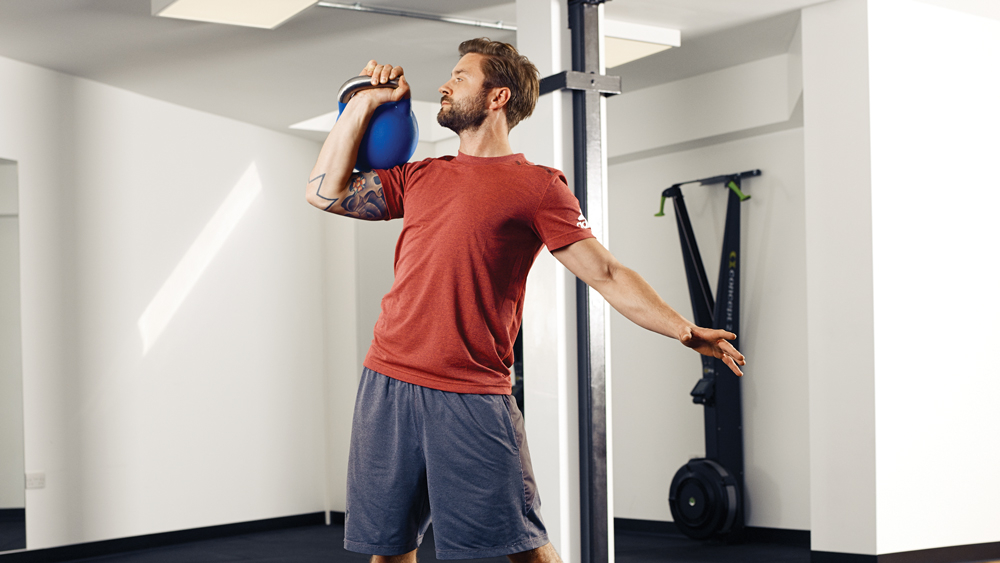
This five-move workout will help you reach your goal, whether you want to torch fat or build muscle. Use a weight of kettlebell that allows you to only just complete the final rep of the final exercise. Select your workout according to your goal:
Burn fat
If shrinking your waistline is your goal, do ten reps of each exercise in order, without stopping, to complete one round. Rest for 60 seconds then complete another round. Do five rounds in total.
Progression Add a rep each round until you are doing 15 reps for each move. Once you complete that, use a heavier kettlebell and go back to doing ten reps of each exercise.
Build muscle
If you’d like to add lean muscle, do 12 reps of each move to complete one set then rest for 45-60 seconds. Do four sets of each exercise in total, resting for 60-90 seconds between exercises.
Progression Add a rep each round until you are doing 15 reps for each move. Once you complete that, use a heavier kettlebell and go back to doing 12 reps of each exercise.
1 Clean
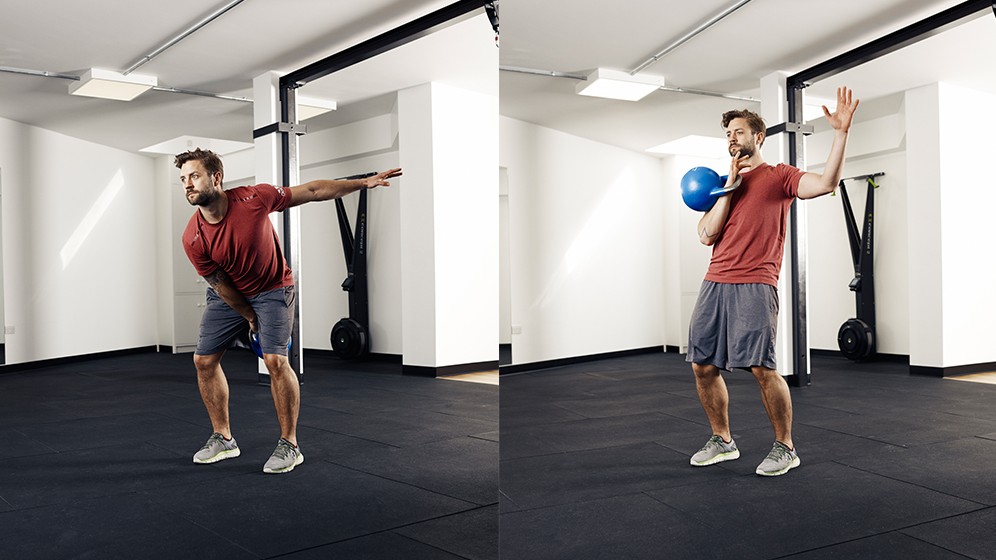
Swing the kettlebell between your legs and drive the hips forwards. Once the bell passes stomach height, draw your elbow back and slide your hand under and around the bell to catch it in the “rack” position, then lower the bell in an arc to repeat the move.
Expert tip: “Make sure the kettlebell doesn’t travel too far away from your body,” says Turner. “It’s a great exercise for power development as well as being a good way of moving into the start position of an overhead press, so it’s a good linking move.”
Get the Coach Newsletter
Sign up for workout ideas, training advice, reviews of the latest gear and more.
2 Overhead press
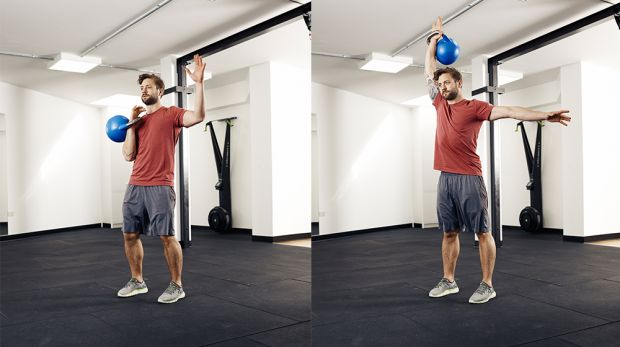
Start in the rack position with the kettlebell at shoulder height and your elbow tucked in to your side for support. Press the weight directly overhead, using the most efficient path possible to reduce stress on your shoulder joint.
Expert tip: “Start with your elbow under the kettlebell and push up in a straight line while rotating your arm to finish with your palm facing forwards,” says Turner. “You can also ‘pop’ the bell off your ribcage to initiate the movement if you’re lifting a heavy weight.”
3 Snatch

Swing the bell between your legs, then drive forwards with your hips to swing it up in an arc. When the bell gets to just below chest height, being your elbow back and slide your hand under and around the kettlebell while using its momentum to end with it overhead.
Expert tip: “Try to avoid moving your hand under the bell and then pressing up in a separate movement,” says Turner. “The move should be one movement and as smooth as possible, using the momentum of the kettlebell.”
4 Windmill
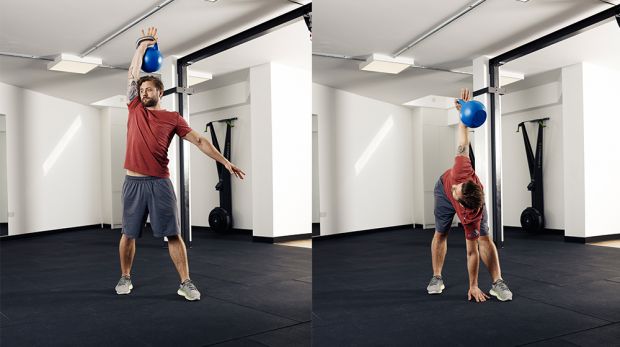
Start with the weight above your head and your feet wider than shoulder-width apart. Your weight distribution should be biased towards the side that’s holding the bell. Keeping your eyes on the bell, lower your torso until your hand touches the floor.
Expert tip: “Windmills look intimidating but they are an excellent move for building core stability and shoulder stability because they require a lot of control,” says Turner. “They also give you a good hamstring stretch.”
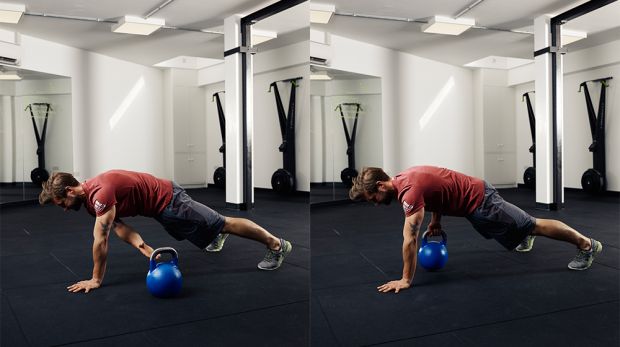
Get into a straight-arm plank position with your body in a straight line from head to heels and position a kettlebell to one side of your body. Reach through with the opposite hand to drag the bell across to the other side. Switch sides and repeat the move.
Expert tip: “This is great way of making the plank more interesting,” says Turner. “The wider you take the kettlebell, the harder it is to do. You can also try to raise the kettlebell off the floor slightly to turn it into a modified reverse flye.”
Ashton Turner is the co-founder of Evolve 353 gym in London. He has worked with clients across multiple training disciplines including kettlebells, Olympic lifting, strength and conditioning, and Pilates.
Coach is a health and fitness title. This byline is used for posting sponsored content, book extracts and the like. It is also used as a placeholder for articles published a long time ago when the original author is unclear. You can find out more about this publication and find the contact details of the editorial team on the About Us page.










